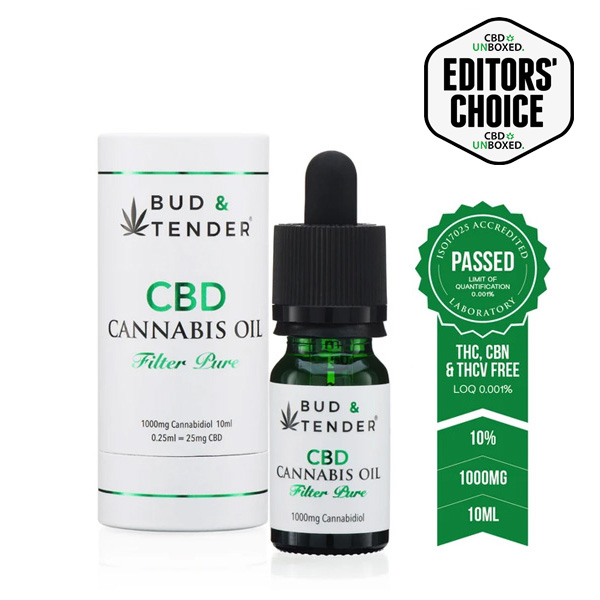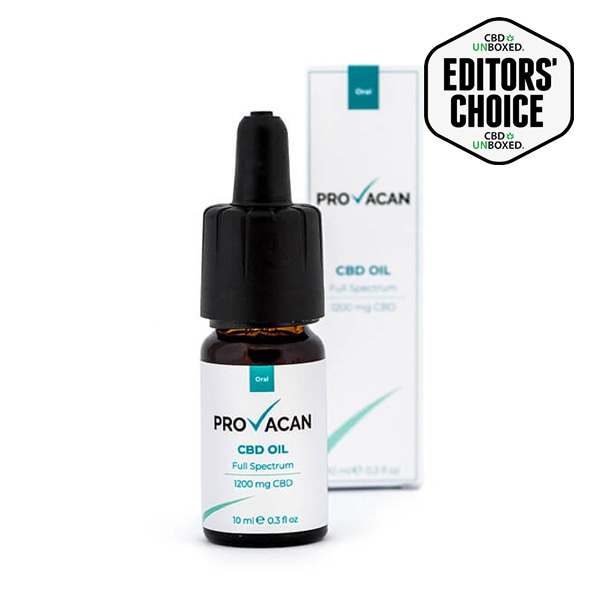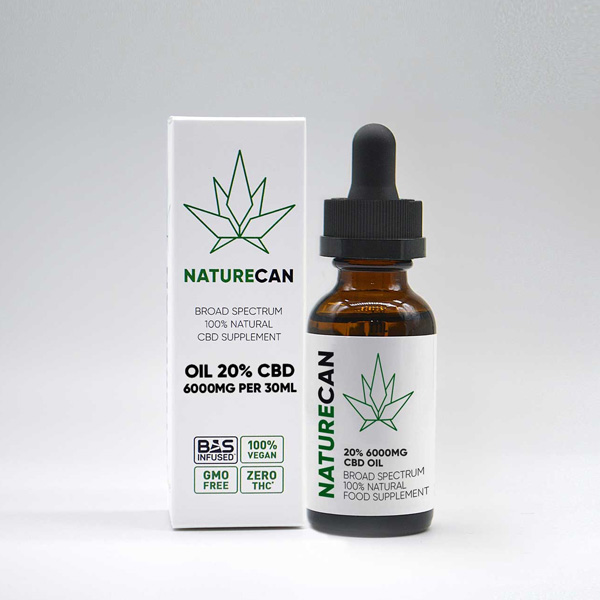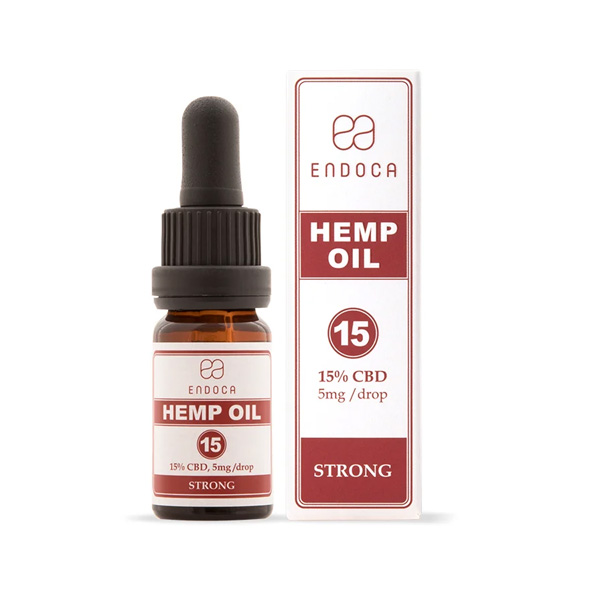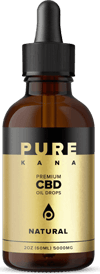New to CBD and suffering from Attention Deficit Hyperactivity Disorder (ADHD)? We’ve put together this ultimate guide to CBD to help you understand how CBD’s properties could help you manage some of the symptoms of ADHD. We also list the Best CBD Oils for ADHD at the end of this article.
CBD for ADHD – The Ultimate Guide
According to the Royal College of Psychiatrists, ADHD is a growing concern in the UK with 3% to 6% percent of school-aged children being diagnosed with Attention Deficit Hyperactivity Disorder, and one in seven of these cases stays until adulthood.
More worryingly though, whilst only 120,000 people in the UK have been formally diagnosed with the condition, ADHD Action believes that about 1.5 million adults in the UK have the condition.
ADHD is a serious problem to many parents, carers, teachers, and employers, given that it’s widely associated with low productivity at work, poor academic performance, and chronic mental issues.
Choosing CBD, a popular product made from hemp extract (cannabis plant), is a natural and effective treatment for ADHD which also counteracts some of the side effects of ADHD medication.
In this article we discuss the benefits of CBD oil for ADHD based on research papers and peer-reviewed studies. We explain how CBD oil can help you reduce the side effects of ADHD medication, improve some of its symptoms and provide links to purchase high quality CBD oils for ADHD we’ve tried and tested.
Take our CBD Quiz
If after reading this guide you are still unsure about what products to choose, simply take our CBD Quiz which has been designed specifically to identify the product and strength that is best suited to your personal needs.
CBD has been proven to help with the symptoms of ADHD as well as counteract the side effects of traditional ADHD medication.
What is CBD?

Cannabis (or Marijuana) and hemp are the same plant and come from the Cannabaceae family. Both plants are filled with organic compounds known as “cannabinoids”. Hemp has over 112 different cannabinoids, all of which have their own health benefits.
The main two cannabinoids or compounds of the hemp plant are THC (also known as “Tetrahydrocannabinol”) and CBD (also known as “Cannabidiol”).
THC is the compound known to give cannabis smokers this feeling of “high” and is currently illegal in the UK.
CBD on the other hand, contains none of the psychoactive properties associated with THC (meaning it won’t get you “high”) and is completely legal in the UK. It is also non-addictive and has been suggested to have several medical benefits. Some of these benefits include reducing anxiety and depression, improving sleep and insomnia, reducing pain and inflammation, as well as helping with stress or neurological disorders.
These benefits are possible because CBD interacts with your “Endocannabinoid System” (ECS), which essentially monitors and regulate key functions of your body such as your heat level, your food intake, your hormone levels and so on. When your ECS detects that something is operating outside of what it considers to be its “normal range”, it activates to bring things back to its baseline. If you are exercising and become too hot, your ECS activates and makes you sweat to bring your temperature down. If you need more calories for your body to keep performing (for example running) but you aren’t feeding it, your ECS may start redirecting the energy available towards vital organs such as the heart and brain, leading to a drop in physical performance.
The term Endocannabinoid can be broken down into two parts:
- Cannabinoid: which comes from Cannabis
- Endo: which is short for “Endogenous” and means that it is naturally produced by your body.
So endocannabinoid simply means that your body naturally produces cannabinoids, and does so thanks to cannabinoid receptors present in the body, which fall under two categories:
CB1 Receptors

CB1 receptors, which are located in various regions of the body, with a large concentration in the brain and the nerves of the spinal cord, co-ordinate mood, emotion, appetite, and other functions.
CB2 Receptors

CB2 receptors are more commonly found in the immune system and are responsible for controlling inflammation and pain. CBD stimulates these receptors and induces the body to release serotonin.
Serotonin, or 5-HT, is a neurotransmitter that carries signals from one neuron to the other. CBD increases the level of serotonin, which, in return, helps reduce pain, reduce inflammation in the body and possibly reduces the cramping experienced during period pain.
Whilst there are very few differences between “Marijuana” and “Hemp”, the main difference is simply legal and linked to the level of THC that is present in the plant. So different parts of the cannabis plant are either defined as hemp or as cannabis / marijuana.
- Hemp: hemp is the stalks, stems and sterilized seeds of cannabis sativa (“Cannabis Sativa” is the scientific Latin term that defines hemp, cannabis or marijuana plant species)
- Cannabis and Marijuana: the leaves, flowers and viable seeds of cannabis sativa
The varieties of cannabis that are regulated, legal and available in the UK are those that produce less than 0.2 percent THC. And given the fact that most THC is in the flowers, CBD products are primarily made from hemp (stalks, stems and sterilized seeds of cannabis sativa) which contain very little THC and are safe to consume.
There has been a lot of interest in CBD from both the research and medical community over the last few years, due to its range of health applications – including but not limited to pain relief, fighting the side effects of cancer medications, alleviating insomnia, lowering stress levels, improving acne outbreaks, counteracting heat disease, or reducing seizures in patients with epilepsy
For all these reasons, CBD products are legal in the UK if they contain less than 0.2% THC and as long as they are advertised as a health supplement and not a medication.
Products containing CBD come in many different forms, with the most common including CBD oils, CBD gummies, CBD capsules, CBD vapes and CBD edibles. Some forms are more fast-acting than others, some have different flavours, some contain differing proportions of CBD extract, and so on, so the type you choose depends entirely upon your personal preferences and the condition you wish to treat.
Here’s what you need to know about using CBD for Attention Deficit Hyperactivity Disorder.
ADHD: What You Need to Know
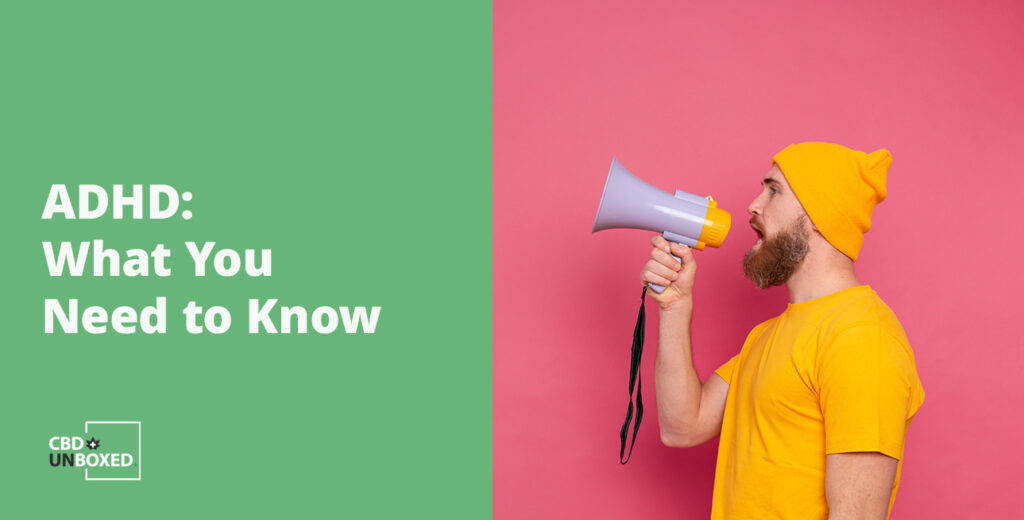
ADHD – short for Attention Deficit with Hyperactivity Disorder – is a neurodevelopmental anomaly. This brain-based condition affects both adults and children but usually develops from childhood into adulthood. Experts believe that you’re likely to develop ADHD as adults if you had it at teenage or childhood, but the good news is that the symptoms may gradually reduce with age.
Typical ADHD symptoms include hyperactivity, impulsivity, and inattentiveness. The resultant effects manifest in different ways, based on the particular type of ADHD.
Patients with the inattention subtype lose attention easily and find concentration a hassle. This subclass may not experience compulsive behaviours and hyperactivity.
Conversely, children with compulsive-hyperactive ADHD display abnormally high hyperactivity and may find it particularly tricky to control their behaviour as expected of their age.
Another class reports symptoms of both inattentiveness and compulsive-hyperactivity.
Different Types of ADHD
ADHD manifests in three primary forms, namely:
Impulsive-hyperactive ADHD: This is regarded as the least prevalent ADHD subtype. This variant comes with hyperactive and impulsive behaviours, without necessarily exhibiting distractibility or inattention
With impulsive, hyperactive ADHD, one may experience:
- Talkative tendency
- Fidgeting, restlessness
- Difficulty sitting at a place
- Impatience
- Almost always on the go
- Can hardly sustain quiet activities
- Fiddling or playing with items around, even when not related to the subject at hand
- Unrelated comment and responses
- Acting out of turn
People with impulsive-hyperactive ADHD are known to disrupt activities in class, for kids, or at the workplace, for adults.
Inattentive ADHD: This form of ADHD basically comes with distractibility and inattention. Victims may (or may not) be hyperactive – but this isn’t the predominant symptom.
Attentive ADHD is usually associated with:
- Being easily bored
- Ignoring details
- Easily distracted. Difficulty focusing on tasks
- Mental clutter and difficulty organizing thoughts
- Misplacing papers, pencils, and other work tools
- Day dreamy – appear weak and slow
- Difficulty sticking to instructions and directions
- Relatively slow information processing
While ADHD is generally more prevalent in males than females, studies show inattentive ADHD is predominant in girls than boys.
Combined ADHD: This form of ADHD is characterized by a combination of hyperactive and/or impulsive behaviours and inattention. This is considered the commonest subtype of ADHD. However, in preschool-age, hyperactivity is most common.
Causes of ADHD
ADHD is inarguably the most studied aspect of adolescent and children’s mental health. Research is yet to unravel the actual cause of the mental disorder.
Some evidence say ADHD is genetic. Research authors discovered that certain family lines are most exposed to ADHD, as it is most common among relatives. A child’s chances of developing ADHD may be higher if both or either parent has it.
We do not yet know the specific genes associated with ADHD. Several studies have, however, investigated the links between ADHD and DRD4 gene. Reports suggest that the DRD4 gene affects receptors to which dopamine binds in the brain. Researchers have found a variant of this gene (DRD4) in ADHD patients.
Given research reports, many experts think the gene may have a hand in ADHD development. Most likely, other genes may contribute.
Noteworthily, however, people with zero ADHD family history still get ADHD. Environment and several other factors may also cause or aggravate ADHD symptoms.
Possible triggers include:
- Neurotoxins: Research reports suggest a link between ADHD and certain neurochemicals, including Lead and certain pesticides. Studies say kids’ exposure to Lead may impact their learning negatively. A 2013 Clinical Psychology Review says Lead may potentially cause impulsivity, hyperactivity, and inattention. Chemicals sprayed on agricultural produces and lawns are possible culprits too. Exposure to these pesticides, collectively called organophosphates, may trigger ADHD development – according to research. A supportive 2016 study shows organophosphates may impact children’s neurodevelopment adversely.
- Nutrition: There is no evidence suggesting that food additives – like preservatives and dyes – can cause hyperactivity in kids. Most packaged snacks and processed foods house artificial colouring. Soft drinks, fruit pies, and jams are a common home for sodium benzoate preservative. Researchers are yet uncertain whether these chemical additives can cause ADHD.
- Alcohol and smoking: It’s believed environmental influences of ADHD play out at the prenatal stage. Parental exposure to smoking and drinking may cause ADHD symptoms in children. A 2012 study says children who had prenatal exposure to drugs and alcohol had higher chances to develop ADHD.
- Brain structure and function: Studies have shown likely differences in the brain structure of those with ADHD and those without the disorder. Scientists do not fully understand the implication of this difference. For instance, brain scan studies suggest a possible contraction in a particular part of the brain of people with ADHD, while other areas may be bigger. Related research shows ADHD patients may have imbalanced levels of neurotransmitters in the brain, or the chemicals may be non-functional.
Side Effects of ADHD Medication
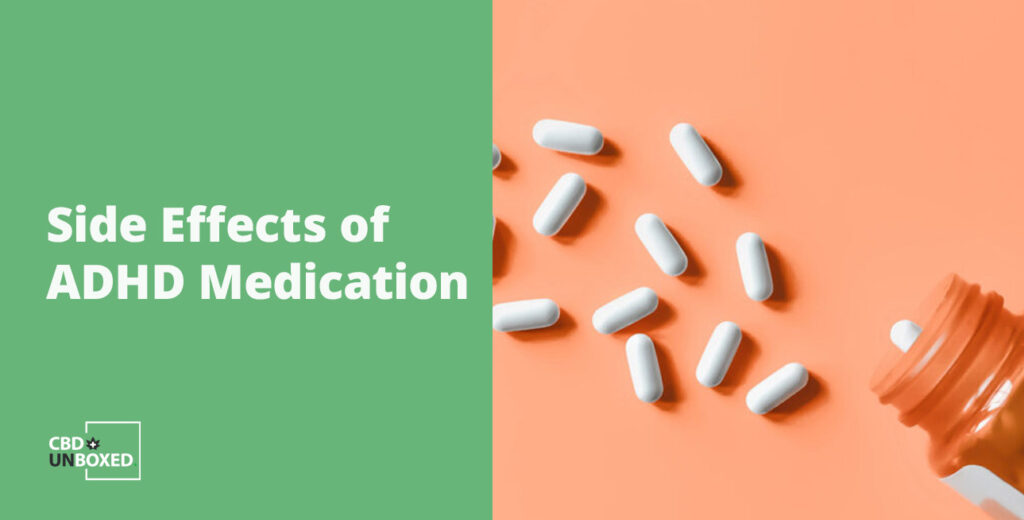
Several treatment options help alleviate ADHD symptoms and reduce their impacts on your day-to-day life quality.
ADHD treatment includes therapies and medicines – a combination of both options may deliver the best effects. Psychiatrists or paediatricians usually supervise treatments while a general practitioner monitors.
There are only five groups of medicine approved for ADHD treatment, namely:
- Methylphenidate
- Guanfacine
- Dexamphetamine
- Atomoxetine
- Lisdexamfetamine
However, note that these medications are no cure for the disorder but may improve the victim’s focus, reduce impulsive tendencies, cause mental calm, and help them learn.
Experts recommend breaks between ADHD treatments to help access the medication’s progress and know whether to continue or consider an alternative.
If you only diagnosed ADHD in adulthood, a specialist and GP can recommend suitable medications.
The doses are usually progressive – i.e., start small and increase over time. Regular check-ups would help evaluate the effectiveness and possible adverse reactions.
Methylphenidate
Here’s inarguably the most familiar prescription for ADHD. Methylphenidate is a stimulant – that is, it works by increasing brain activities, particularly across areas associated with behaviour and attention. Methylphenidate is a suitable recommendation for ADHD patients above five years.
The drug may be taken in smaller doses spread across the day or only in the morning – with the effects released in bits throughout the day.
Although methylphenidate has helped a great deal, the adverse reactions have been a concern among users and health experts.
Common among the bucketful of complaints include:
- Headaches
- Insomnia
- A mild increase in heart rate and blood pressure
- Loss of appetite
- Mood swings
Guanfacine
Guanfacine is thought to influence certain parts of the brain responsible for attention and reduce blood pressure.
This medicine is ideal for children (not over 5) and teenagers where it’s impossible to use lisdexamfetamine or methylphenidate. Guanfacine is usually administered once daily – morning or evening and not suitable for adult ADHD patients.
As with others, commonly reported side effects include:
- Dry mouth
- Headache
- Abdominal pain
- Tiredness or fatigue
Dexamphetamine
Dexamphetamine and lisdexamfetamine have similar effects. They are typical recommendations for ADHD patients from age 5 and above.
This drug usually comes in tablets, to be taken once or twice daily. Typical side effects include:
- Mood swing
- Headaches
- Reduced appetite
- Diarrhoea
- Aggression and agitation
- Nauseous feeling
- Dizziness
Lisdexamfetamine
Lisdexamfetamine works like dexamphetamine. It’s suitable for people from five till teenage. This medicine is usually introduced where the condition seems to resist treatments after six weeks with methylphenidate.
Lisdexamfetamine is available in capsules to be administered once daily. Typical of most ADHD therapeutic prescriptions, lisdexamfetamine may leave some side effects, including:
- Drowsiness
- Aggression
- Reduced appetite
- Diarrhoea
- Headaches
- Dizziness
- Nauseous feeling
Atomoxetine
Atomoxetine works somewhat differently from the other ADHD drugs. The medicine boosts the level of noradrenaline, a chemical in the brain.
The chemical transmits messages across brain cells. Increasing the chemical may help boost concentration and manage impulses.
Atomoxetine is administered to children (over 5), teenagers, and adults. It’s mostly used where methylphenidate or lisdexamfetamine doses are impossible. It’s also a good option for adults if the ADHD symptoms are confirmed.
Atomoxetine is usually available in capsules and should be taken twice or once daily.
Typical adverse effects include:
- Trouble sleeping
- Stomach aches
- Irritability
- Headache
- Dizziness
- Nausea and vomiting
- A slight reduction in heart rate and blood pressure
Atomoxetine may also cause more severe effects like liver damage and suicidal thoughts.
If you feel suicidal or depressed while using these drugs, discuss with a licensed doctor.
Therapy
Used alongside medicines, therapies can come in handy to treat ADHD in adults, teenagers, and children. ADHD therapies are usually prescribed for managing additional issues like anxiety and conduct disorder, which generally comes with ADHD.
Here are standard therapies used for ADHD.
- Social skill training: This entails engaging children in role-plays to educate them on how to act in certain social situations by showing them how their behaviours make others feel.
- Psychoeducation: By this, patients are encouraged to talk about ADHD and its effects. This therapy works for all – adults, teenagers, and children. It helps ADHD patients understand ADHD and help them live a normal life even with the condition.
- Behavioural Therapy: This therapy has to do with behaviour management, where a reward system is used to encourage children to manage their attention disorder. Parents or carers of children with ADHD can encourage certain behaviour, like eating at the dining table. Behavioural therapy commends good behaviour and disapproves of bad ones. For tutors, this may begin from understanding the plan and structure of activities. It also entails applauding children for their progress – regardless how little.
- Cognitive behavioural therapy: Also called CBT, cognitive behavioural therapy may help handle ADHD symptoms by altering thinking and behavioural patterns. A CBT therapist may help modify your child’s behaviour. A therapist would usually conduct CBT individually or in groups.
- Parenting classes and educative courses: ADHD-specific parenting training and related educational programs may help you discover how to talk with your child, including partnering with them (whether through play or work) to improve their behaviour and boost attention level. Parent training may even begin before any formal diagnosis. Parental training programs are usually conducted in small groups – 10 to 12 parents group. A training session may last up to two hours, with about 10 to 16 sessions per program. Note that parenting training and programs do not connote lousy parenting. Rather, it’s designed to educate parents – and carers – more about handling behaviours, increasing parents’ confidence to assist your child and improve their condition.
Other likely treatments
Limited evidence suggests omega-3 and -6 fatty acids may help people with ADHD. However, before you use it, discuss with a GP about your decision, as some may trigger drug-to-drug reaction or reduce its potency.
Also, note that some supplements may cause health concerns if used extensively.
CBD for ADHD
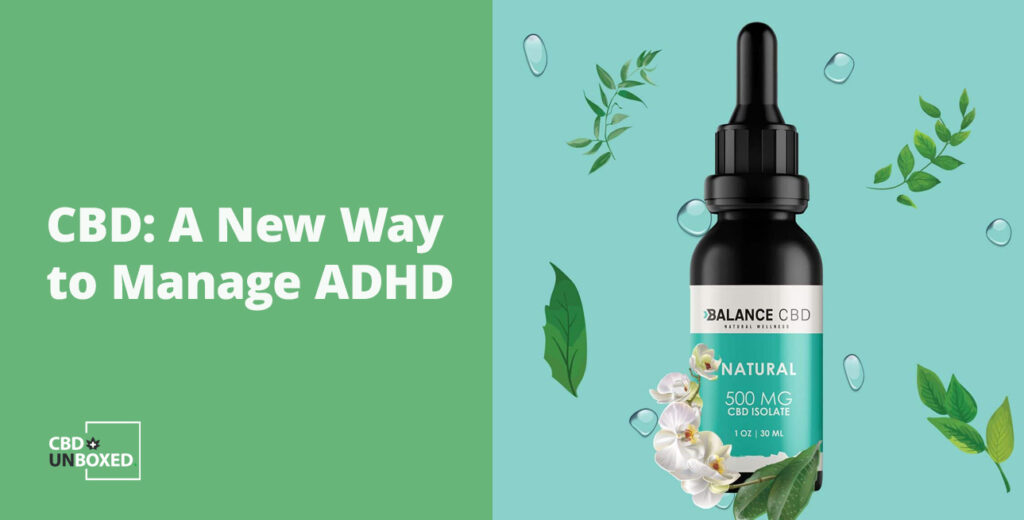
Although people have been using herbal remedies for sleep, anxiety, or pain for centuries, it wasn’t until the last few years that hemp’s legal status changed to allow more users and additional studies.
Cannabidiol, the scientific name for CBD, on the other hand is a naturally occurring compound coming from the hemp plant that helps people fight inflammation, pain and various health related issues.
Many patients suffering from ADHD have high levels of anxiety, stress and depression which can ultimately lead to the common cognitive symptoms of ADHD which include low focus, short attention spans or poor concentration. CBD has shown promising results when it comes to anxiety, stress as well as depression, and can also prevent some of the side effects of traditional ADHD medication such as nausea, headaches or insomnia.
When it comes to ADHD, the main properties of CBD include:
- Antidepressant: CBD can help reduce anxiety, stress and depression
- Neuroprotective: CBD helps protect nerve cells against damage, degeneration, or impairment of function
- Analgesic: CBD relieves pain associated with ADHD medication such as headaches and abdominal pain
- Sleep: CBD can help you fall asleep and stay asleep throughout the night
CBD Can Reduce Stress & Anxiety

When it comes to periods, emotional and mental disturbances can be just as prevalent as physical disturbances, and include symptoms such as mood swings, anxiety and depression, as well as sleep disturbances and insomnia.
There is evidence suggesting that CBD is a viable anxiolytic and has been recognized for its ability to alleviate sleeplessness, stress, inflammation, and lingering anxiety.
But how? To understand the role CBD can play in reducing mental disturbances during your periods, it is important to understand the crucial role brain chemistry plays, especially in relation to the hippocampus and the amygdala.
- Hippocampus: The hippocampus is a complex part of the brain that plays a major role in cognitive and emotional functions. There is increasing evidence showing that adult hippocampal neurogenesis – the process by which the hippocampus regenerates thanks to neural stem cells producing new neurons – helps reduce stress and anxiety by boosting the endocrine response. Put it simply, people with attenuated (reduced) hippocampal neurogenesis are more likely to develop anxiety-related behaviours.
- Amygdala: The amygdala is a collection of cells near the base of the brain (there is one in each side of the brain) that is part of the brain’s limbic system. It is the area of the brain where emotions are given meaning and remembered. Research has shown that people who suffer from depression will experience a hyper-active amygdala.
CBD helps to ease the symptoms of anxiety, stress and depression by regulating the functions of the hippocampus and the amygdala, and therefore their effects on how our brain processes potentially anxiety ridden information or situations.
How does CBD help?
CBD has been proven to increase cerebral blood flow to areas of the brain associated with memory processing, specifically the hippocampus. The findings identify a potential mechanism for the use of CBD to treat disorders associated with altered memory processing, including Alzheimer’s disease, PTSD, and schizophrenia.
Put it simply, a single dose of cannabidiol (CBD) helped increase blood flow to the hippocampus, an important area of the brain associated with memory and emotion, which means that CBD has been proven by several scientists and medical professionals to help smooth the cognitive processes of this part of the brain.
According to Dr Michael Bloomfield from UCL: “Cannabidiol is one of the main constituents of cannabis and is gaining interest for its therapeutic potential. There is evidence that CBD may help reduce symptoms of psychosis and anxiety as well as improve memory function. Additionally, CBD changes how the brain processes emotional memories, which could help to explain its reputed therapeutic effects in PTSD and other psychiatric disorders.”
These finding have been backed by double blind studies where on different occasions, separated by at least a week, each participant was given a 600mg of oral CBD or a placebo. The doses came in identical capsules, so participants did not know which one they were taking on which occasion.

Researchers measured blood flow to the hippocampus using ‘arterial spin labelling’ – an MRI (magnetic resonance imaging) brain scanning technique which measures changes in the blood oxygen levels.
CBD significantly increased blood flow in the hippocampus, however CBD did not cause significant differences in blood flow in other regions of the medial temporal lobe (MTL), of which the hippocampus is a significant component.
In the prefrontal cortex, the area of the brain used for planning and decision making, CBD caused a significant increase in blood flow in the orbitofrontal cortex.
This supports the view that CBD has region-specific blood flow effects in the human brain, which would help with conditions such as depression, stress and anxiety.
In a double-blind study in Brazil, 57 participants received either CBD oil or a placebo 90 minutes before they underwent a simulated public speaking event. The researchers found that a 300-mg dose of CBD was the most effective at significantly reducing anxiety during the event.
Since one of the buy-products of CBD consumption is an increased blood flow in the hippocampus as well as in the orbitofrontal cortex, researchers assume that CBD essentially helps repair damage in both these areas caused by the symptoms of depression and anxiety.
CBD Neuroprotective Properties
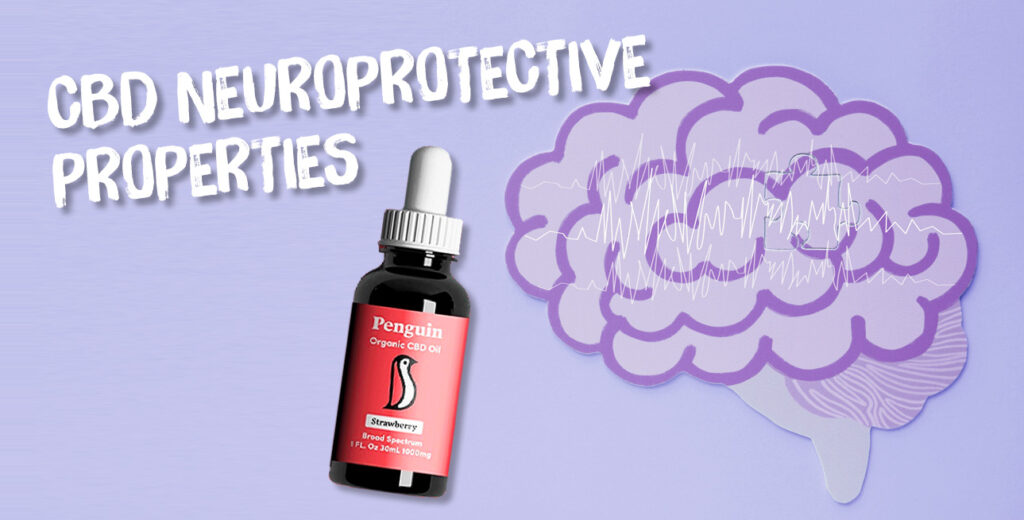
Preclinical studies have shown that CBD possesses numerous potential therapeutic properties: anti-inflammatory, analgesic, anticonvulsant, antioxidant, and neuroprotective. Yet, research remains very limited when it comes to the use of CBD to treat psychiatric and neurologic conditions such as ADHD.
That being said, CBD appears to have neuroprotective properties, meaning that it helps protect nerve cells against damage, degeneration, or impairment of function.
This is particularly interesting for patients suffering from neurological disorders such as multiple sclerosis, epilepsy or children with Dravet syndrome an could apply to those suffering from ADHD, although more research is required at this stage.
Researchers believe that CBD can act on the ECS (the endocannabinoid system) as well as other brain signalling systems to provide benefits to those patients and early studies show promising results.
- MS: When it comes to MS (multiple sclerosis), an oral spray called Sativex and consisting of CBD and THC has been proven to be an effective way to reduce muscle spasticity (muscle spasms) in patients. The study found that Sativex reduced spasms in 75% of patients with MS who were experiencing muscle spasticity and for which traditional medications were not working.
- Epilepsy: When it comes to Epilepsy and according to the Epilepsy Society, medical cannabis has been proven to reduce the number of seizures in patients suffering from epilepsy. Three separate double-blind randomised controlled trials of pure CBD (CBD isolate) in children and young people with epilepsy have shown a reduction in the number of monthly seizures experienced by patients compared to those that received placebos. Additional studies have shown that it may also have an anti-epileptic effect in the epilepsies in general, not just in children and young adults.
- Dravet Syndrome: As for patients suffering from Dravet syndrome, a complex epilepsy disorder experienced by children, it was found that children with severe epilepsy who were given between 0.9–2.3 grams of CBD oil per pound of body weight, saw a median reduction of their seizures of 36.5%.
CBD Combats the Side Effects of ADHD Medication: Pain & Headaches
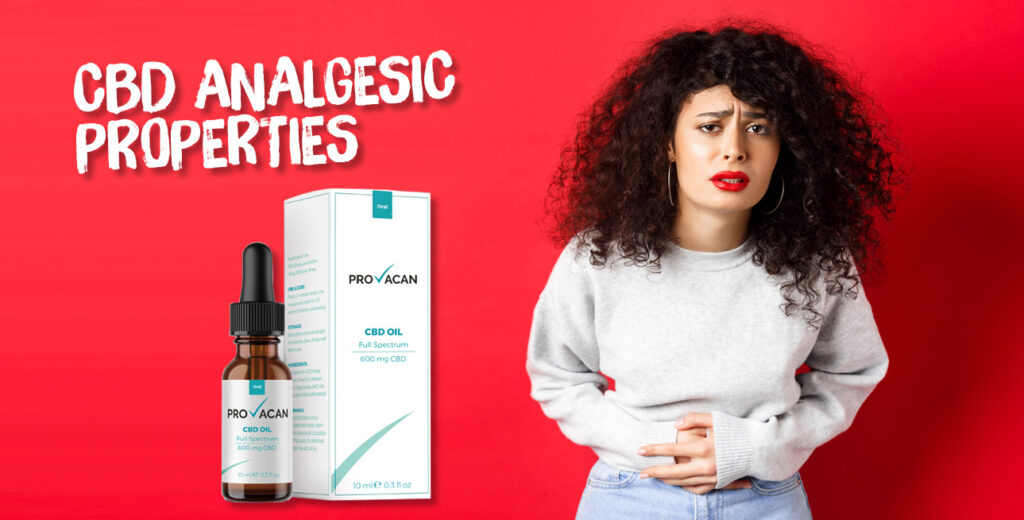
CBD has proven analgesic properties, meaning that it helps relieve pain linked to traditional ADHD medication. But how?
The human body contains a specialized system called the ECS (the endocannabinoid system), which aim is to regulate a variety of functions such as sleep, appetite, pain and immune system response. The body also produces endocannabinoids, which are simply neurotransmitters that bind to cannabinoid receptors in your nervous system.
CBD is believed to interact with specific receptors, specifically the CB1R and CB2R.
- CB1 receptors, which are located in various regions of the body, with a large concentration in the central nervous system and brain, co-ordinate mood, emotion, appetite, and other functions.
- CB2 receptors are more commonly found in the immune system and are responsible for controlling inflammation and pain. CBD stimulates these receptors and induces the body to release serotonin.
Serotonin, or 5-HT, is a neurotransmitter that carries signals from one neuron to the other. CBD increases the level of serotonin, which, in return, helps reduce pain, reduce inflammation in the body and possibly reduces the cramping experienced during period pain.
According to Researchgate, a study published in November 2019 shows improvement of physical discomforts such as headaches and various signs of physical pain. According to Teitelbaum J, there have been multiple studies showing patients found relief of menstrual pain, back pain, spinal pain, joint pain (e.g. arthritis) or fibromyalgia pain.
Furthermore, a 2018 review of the relevant research also reports that cannabis seems promising as a method of relieving pain, including pain from headaches and migraines.
The results of a 2016 study indicate that medical cannabis may reduce the frequency of headaches and migraines. The study found that the frequency of headaches decreased from 10.4 to 4.6 headaches per month with the use of medical cannabis (of which CBD is a component). These positive effects were reported by 40% of patients with the most common effects reported being the prevention of headaches and the decreased frequency of headaches.
CBD Can Improve Sleep

If your sleep is disrupted due to your stress or anxiety, you may be happy to hear that CBD could help you fall asleep and stay asleep throughout the night.
There is extensive research on the effectiveness of CBD oil when used to treat insomnia and improve sleep.
CBD works with the human body to increase calm, decrease stress, and lower anxiety levels. These responses indirectly improve your sleep. In the 1990s, researchers confirmed the body has an endocannabinoid system or ECS. Researchers have only found a link between the cannabinoids found in hemp with the ECS, making it an unusual reaction.
The ECS is a complex cell-signalling system consisting of endocannabinoids, cannabinoid receptors, and enzymes. Scientists believe it plays many roles, including maintaining balance in the body. When it comes to sleep, the ECS helps regulate sleep and sleep cycles. Also, relating to sleep, a potential function is boosting anandamide to reduce depression and anxiety.
The cannabinoid receptors interact with endocannabinoids and cannabinoids. The CB1 is located in the nervous system and brain. Additionally, the CB2 is found mostly in the immune system and most organs.
A recent surge in scientific publications has found preclinical and clinical evidence documenting value for CBD in some neuropsychiatric disorders, including epilepsy, anxiety, and schizophrenia. Evidence points toward a calming effect for CBD in the central nervous system.
In 2019, a large case series was published in the Permanente Journal about CBD’s calming effects on the central nervous system. The studies showed patients taking CBD saw lower anxiety levels, experienced less stress, and slept better at night. Additionally, most participants experienced no or few side effects.
CBD: The ‘Entourage Effect’

Now that you know how CBD can help you reduce major symptoms linked to your menstrual cycles, it is important to understand the concept of ‘entourage effect’.
The entourage effect is the theory that while each botanical compound has a unique role or benefit, its behaviour may change when the presence of another compound is present.
For example, it would be more effective and quicker to produce a play with a team of actors rather than one actor playing all the parts. When each actor has a specific role to focus on, they can learn their lines and direction and support their fellow actors. But one actor alone will take a lot longer to learn all the lines for the various parts they have to play.
This is similar to the entourage effect. Essentially, everyone knows their role, but their performance can be enhanced by comradery.
But how is this applied to CBD?
CBD Entourage
We know that CBD products stimulate the endocannabinoid system and make it work more efficiently. But different CBD products affect the ECS differently, depending on their formulation. As previously, discussed there are 3 types of CBD formulation:
- Full-spectrum: No additional extraction, contains all the natural ingredients of the hemp plant, including CBD, THC, terpenes and flavonoids.
- Broad-spectrum: All traces of THC are removed from the oil. Every other ingredient remains.
- CBD Isolate: The oil only contains CBD, everything else is removed.
One of the above formulations has been proven to give better results in reducing pain, inflammation and many other symptoms. Which one of these formulations do you think stimulates the ECS best?
Would it be the most natural substance (full-spectrum), the one with any psychoactive ingredients (broad-spectrum) or the purest form of CBD (isolate)?
According to the entourage effect, it is the full-spectrum CBD because it keeps all the natural components of the hemp plant, which include:
Cannabinoids and Terpenes
The theory of the entourage effect was first introduced by Dr Ethan B. Russo. He thinks that cannabinoids such as CBD and THC work with terpenes (aromatic component) to produce a “synergy.”
In his study “Taming THC: Potential cannabis synergy and phytocannabinoid-terpenoid entourage effects” (2010) Dr Ethan B Russo suggests:
- The terpene pinene, which gives the scent of pine, may help counteract compromised memory caused by THC.
- CBD and terpene limonene, which gives a citrus scent, might work together to alleviate anxiety.
- A combination of CBD and terpene caryophyllene, offering a pepper smell, may be beneficial in the treatment of addiction.
The possibility of “synergy” of endless but have not yet been categorically proven. For more information read his other study “The Case for the Entourage Effect and Conventional Breeding of Clinical Cannabis: No “Strain, No Gain” published in 2019.
Omega-3, Antioxidants and Nutrients
In addition to CBD, THC and terpenes, full-spectrum CBD oil also contains Omega-3, which is vital to the ECS. Omega-3 is used to maintain the receptor CB1, which regulate pain and memory.
It also aids the absorption of external cannabinoids, as well as making endocannabinoids internally.
Other nutrients and antioxidants have also been discovered in full-spectrum CBD oil, for example, Vitamin E. Vitamin E is a fat-soluble compound that can prevent cataract formation, postpone the appearance of wrinkles and grey hair, boosts the immune system and reduces inflammation.
As you can see CBD oil when first extracted from the hemp plant has a huge list of ingredients. All of them seem to play a part in helping our bodies. We may not know exactly what they all do. But as time passes and research continues, we can learn more.
Is CBD Legal in the UK?

CBD oil, like any other natural remedy, has been used throughout the ages for its medicinal properties. It was evidenced to have been used in ancient societies with the first recorded case in 2727 B.C in China. It was used to treat anything from poor memory and malaria to gout. It has since been used throughout the world to treat various ailments from anxiety to insomnia and menstrual pains.
Throughout the 1940s, there was extensive research into isolating the CBD compound from the other 100+ compounds found within the marijuana plant, due to its lack of psychoactive effects.
It wasn’t until the 1970’s when the US legally recognised the medicinal worth of CBD oil, and it was decriminalised in Oregon. There was a large emphasis on the clear distinction between the CBD compound and the THC compound within the marijuana plant.
The UK followed suit in 2016, making it legal to buy CBD oil to help treat a multitude of health issues, including but not limited to:
- Depression and anxiety disorders (PTSD, OCD, panic disorder or substance/addiction disorders)
- Chronic pain and inflammation
- Epilepsy
- Heart issues
- Helps to reduce blood pressure and oxidative stress
- Diabetes
- Fight bacteria
- Insomnia and sleep related issues
- Helps with symptoms of schizophrenia,
- Skin conditions (psoriasis/eczema)
- Alzheimer’s disease
In a study conducted by the Centre for Medical Cannabis, their results showed that one in six adults in the UK had tried CBD oil, proving that it is one of the fastest-growing, contemporary, well-being products on the market.
Figures also show that the rates of people using CBD oil were higher amongst the under 55 age range. Also, figures were higher amongst females, with 62% of them using CBD to treat anxiety related issues.
How to Take CBD for ADHD?

There are a few ways to take CBD for ADHD. Choosing a method is often a personal preference. The most common are tinctures, gummies, capsules and vapes.
CBD Tinctures

CBD oil is the most common way of getting your daily dose of CBD to help you manage the symptoms of ADHD or reduce the side effects of ADHD medication.
However, whilst this is the most popular way to consume CBD, CBD oil often has a more earthy, nutty, woody or grass-like taste which is down to the fact the product is natural, safe, and non-toxic.
You can use CBD oil in different manners.
You can either place a few drops under the tongue and hold it there for 30 to 60 seconds. This way of consuming CBD – called sub-lingual. This is one of the best ways to get it absorbed into the bloodstream as this method allows CBD to completely bypass the digestive system and liver metabolism, so the compounds can avoid being broken down by enzymes and reach the bloodstream more quickly. This offers the quickest relief with an onset of 20 minutes or less.
For those who feel the earthy or grassy taste of CBD is too strong, another option is to mix it with a food or a drink to mask the taste. However, be aware that when you digest CBD, it will not provide immediate relief and you may need to wait 30 to 60 minutes for it to start working.
CBD Capsules

If the earthy and grassy taste of CBD oil or its sharp and bitter aftertaste is not for you, you may want to choose CBD capsules to experience all the benefits of CBD without any of the nasty taste or additives that gummies may contain (such as sugar).
CBD capsules are filled with a precise dose of CBD (usually between 10mg and 50mg of CBD per capsule). You can take one or two capsules, once or twice daily with a full glass of water. The CBD usually comes from full-spectrum (<0.01% THC) ground hemp and is rich in cannabinoids and terpenes. However, seeing as CBD capsules go through the digestive system, they take about an hour or so to work.
Choosing capsules is a great way to get your CBD intake and it’s incredibly travel friendly, the ideal solution for those who are always on the go.
CBD Gummies

For consumers who aren’t comfortable using the sublingual drops or those who struggle to swallow capsules, the CBD-infused chewy candies are a yummy way to consume the hemp extract.
Using CBD gummies is also an easy and accurate way of measuring that you are getting the right amount of CBD as each gummy will provide you with an exact dose of CBD (from 10mg to 50mg).
Unlike CBD oil which acts within 20-30 minutes as it gets absorbed into the blood stream, the onset for CBD gummies is about an hour as edibles need to go through the digestive system.
Finally, remember that gummies tend to contain additional ingredients – including sugar and additives. So whilst gummies are a convenient way to get your daily intake of CBD to treat your pain, eating 3-5 gummies each day could have a negative impact on your overall sugar intake! This isn’t always ideal and for that reason, we would always recommend going for CBD oil or CBD capsules whenever possible.
CBD Vapes

Whilst the team at CBD Unboxed isn’t pro-smoking or pro-vaping, using a vape and inhaling CBD appears to be a great way to get your daily dose of CBD as the heating process occurring whilst smoking increases absorption.
How? By smoking CBD, the active compounds quickly enter the bloodstream via the lungs where they are transported throughout the body. Compared to oral intake such as gummies and capsules, vaping avoids the liver breaking down many of CBD’s beneficial compounds which enhances its potency.
Also, unlike edibles which often contain additional ingredients, the only two ingredients present in CBD vapes and vape juices tend to be cannabinoids and terpenes, natural substances commonly found in herbs, fruits, flowers and plants.
Whilst this seems a great way to get your daily CBD intake, we cannot comment on its use or efficacy as we have not tried vaping products and most research papers to this day have focused on CBD oil.
How Much CBD Should You Consume?

CBD doesn’t have one-size-fits-all dosing and calculating a proper dosage of CBD can be tough as our bodies react to it differently.
CBD Dosage Table
We would first recommend using the above CBD dosage table to determine how much CBD you should consume on a daily basis.
The four major factors affecting your CBD dosage are:
- Your weight
- The condition being treated (i.e. depression, chronic pain etc)
- The severity of your condition
- The concentration of CBD oil
Most brands recommend customers start with the lowest dose and increase until they find the right serving size that fits their needs. The most common starting amount is between 10mg and 25mg. For anxiety and depression, the dose can vary from 20mg to 50mg or more.
As a rule of thumb, a person weighting between 10.5 and 17 stones (approximately 150 and 240 lbs) may need between 20mg and 40mg of CBD per day depending on the severity of their symptoms.
When using CBD for the first time, we would always recommend starting with one or two drops of the 3% or 6% CBD oil placed under the tongue (sublingual) and holding it there for at least 30 seconds so it can absorb into the bloodstream.
Taking it first thing in the morning on an empty stomach to see how your body reacts to it is also recommended. If you are not seeing any major benefits with a single drop, increase your intake by a single drop every 2 or 3 days until finding the right balance to treat your personal symptoms.
Finally, as CBD remains a novel food, it is worth noting that the Food Standards Agency (FSA) recommends that healthy adults do not take more than 70mg a day, unless advised by a medical professional.
How Many CBD Oil Drops?
Whilst it may be confusing at the beginning, it’s incredibly simple to work out how many drops of CBD oil you need to take depending on your daily requirements and the strength of the product you bought.
Most bottles of CBD oil contain 10ml of product and come in strengths ranging from 300mg to 2,400mg – also known as 3% and 24% CBD oils. This simply means that in a 1ml drop of the 300mg bottle, you will have 30mg of CBD, whilst the same 1ml of the 2,400mg bottle will give you 8 times that amount for a total of 240mg of CBD.
So assuming you need to hit 25mg of CBD per day with, you will need:
| CBD / Bottle* | CBD / Drop | # Drops |
| 500mg | 1.25mg | 20 drops |
| 1000mg | 2.5mg | 10 drops |
| 1800mg | 4.5mg | 5.5 drops |
| 2400mg | 6.0mg | 4 drops |
*Based on 10ml bottles
Assuming you are using the 500mg CBD oil for a daily dose of 25mg, you will need to take approximately 20 drops per day (25mg divided by 1.25mg per drop). You could break this down throughout the day by taking:
- 8 drops first thing in the morning on an empty stomach
- 6 drops early afternoon
- 6 drops at night before going to bed
If however you bought the 2400mg CBD oil for a daily dose of 25mg, you would only need to take 4 drops per day (25mg divided by 6mg per drop), which you could also spread across the day – 2 in the morning, one in the afternoon and one in the evening.
As with everything, start with a small amount of CBD oil daily to make sure there’s no reaction, then increase slowly by a drop every 1-2 days until finding the right balance.
What to Expect When Taking CBD?

First-time users may experience relief immediately, as CBD is brand new to your ECS. However, this does depend on the ailment you are trying to improve. For example, one dose of CBD could relieve pain, reduce anxiety and reduce nausea but it wouldn’t stop seizures, cure your depression or diabetes.
If it took you a long time to get the symptom then the same will be said for reducing, preventing or eliminating it.
Immediate Relief (After 24 hours a noticeable difference is seen):
Pain, Inflammation, Migraines, Nausea, Anxiety, Arthritis, Epilepsy, Glaucoma, Stress, Insomnia, Multiple Sclerosis, PTSD, Rheumatism and Motion Sickness.
Short Term Relief (Noticeable between 2-14 days):
Acne, Inflammation, ADD/ADHD, Anxiety, Arthritis, Epilepsy, Depression, Stress, Insomnia, Multiple Sclerosis, PTSD, Rheumatism, Endocrine Disorders, Obesity, OCD, Spinal Cord Injury and Rheumatism.
Long Term Relief (Noticeable between 2+ weeks):
ALS, Addiction, Alzheimer’s Disease, Asthma, Atherosclerosis, Autism, Bipolar Disorder, Cancer, Inflammatory Bowel Disease, Depression, Diabetes, Endocrine Disorders, Fatty Liver Disease, Fibromyalgia, Heart Disease, Huntington´s Disease, Kidney Disease, Metabolic Syndrome, Mood Disorders, Neurodegeneration, Obesity, Parkinson´s Disease, Prion Disease, Schizophrenia and Traumatic Brain Injury.
As you can see from the above, symptoms which occur quickly can be improved in the same short time frame. Progressive illnesses and their more severe side effects require longer exposure to CBD before a real difference can be seen.
This is just a general guide, and it’s important to note that every single person will react differently to CBD as no one person has the same biology and lifestyle.
What are the Side Effects of CBD?
Most people do not experience any side effects when taking CBD as this is a natural product. However, as with everything, some people may experience mild side-effects from the hemp extract, including:
- Diarrhoea
- Changes in appetite and weight
- Nausea
- Fatigue
- Irritability
- Drowsiness (a good thing to fall asleep!)
The best way to decrease adverse reactions is to simply lower your daily intake of CBD, or if taking CBD oil under the tongue, to mix it with your food and drink as it will be processed by the digestive system – which means slower absorption. The downside of mixing it with your food is a decreased bioavailability so CBD may not work as well for you.
How To Choose Quality CBD?

As with anything you ingest, the source and quality of your CBD products are important. We would always recommend looking at five main aspects before choosing your CBD product.
CBD Oil from Organic Hemp
Hemp can be grown in just the same way as any other plant – mass-produced and using pesticides and GMOs for the greatest profit, or grown organically with care and attention to provide a fantastic end product.
The best CBD is produced from organic hemp that has benefited from plenty of rain during the growing process. While hemp can physically be grown in many countries, it grows best when the temperature is in the low twenties Celsius. Therefore, the location of the hemp farm is important to ensure the optimum environmental factors are accommodated.
And seeing as cannabis plants can be stressed out by the weather, resulting in a higher THC content (above 0.2%), it’s important to ensure that your CBD oil comes from organic hemp which has been grown in the right part of the world.
Less Than 0.2% THC
Cannabis flowers and extracts usually contain two cannabinoids known as THC (tetrahydrocannabinol) and CBD (cannabidiol). Yet the exact percentage of each can vary greatly, depending on the plant variety and the growing technique used.
THC is the main psychoactive compound in cannabis that produces the high sensation, while CBD has been associated with health benefits.
The EU common agricultural policy states that cannabis plant can be grown for industrial uses, provided their THC content does not exceed 0.2 %. That’s in the plant, not in the CBD product you buy.
So when buying CBD oil from a shop or online retailer, be sure to check that their products contain less than 0.2% THC.
Clean Extraction Method
Once the hemp is grown and harvested, the CBD needs to be extracted from the plant. There are several methods for doing this, including the use of carbon dioxide (CO2). This produces the cleanest and purest CBD extract but can be expensive to do as the machinery required is not cheap.
Alternative methods include using solvents such as ethanol or plant oils (eg olive oil) to extract the CBD.
This can lead to less-pure CBD extract, as small amounts of solvent or oil can remain, although most companies using this type of extraction method will usually test their CBD extracts to ensure they are solvent free and safe to consume.
Tested by Independent Labs
Another thing we would recommend checking is whether or not your CBD oil has contaminants. That’s because cannabis plants readily absorb heavy metals, pesticides, and other potentially harmful chemicals that may be in the soil or water.
To ensure your CBD oil is free of those harmful chemicals, it should be tested frequently while the hemp is growing, and finished products should also be tested, using validated methods.
The extract should be tested and certified by a third-party laboratory to confirm the quality of the CBD. Organic CBD should be GMO-free, pesticide-free, and as pure as possible. In the UK and EU, CBD must register THC content of 0.2% or lower.
Most reputable companies selling CBD oil in the UK publish their lab results on their website. Below are a few examples of companies that play the transparency card with their customer and share their lab results for each batch of CBD they produce:
- Blessed CBD
- Provacan
- Hempura
- Endoca
- Naturecan CBD
- Medterra
- Love CBD
Strength to Match your Needs
Finally, the CBD level within any product should be of a suitable strength to match your needs. Every person is different and their body will respond in a slightly different way, so the level may partially be down to personal preference.
However, higher concentrations might be more suitable for treating different ailments to lower concentrations, and it is wise to check the level of CBD in every product you use.
As a rule of thumb, people looking to use CBD for sleep, anxiety, digestion, relaxation or stress might take between 10mg and 25mg of CBD daily and use the lowest strength (300mg to 600mg), whilst those using CBD as a pain relief for conditions such as severe arthritis, back pain or migraines may want to take 30mg to 50mg of CBD per day and use higher concentration products (1200mg to 2400mg).
So remember that CBD oil comes in different concentration and that this will impact how many drops you need to take – for example Blessed 500mg CBD oil (5%) contains 1.25mg of CBD per drop, whilst their 1800mg CBD oil (18%) contains 4.5mg of CBD per drop.
Top 5 CBD Oils for ADHD
With over 150 CBD brands on the market, it can be difficult to choose the right CBD product. This is why the CBD Unboxed team has tried and tested all most CBD products and brands available in the UK market and assessed them across 6 key areas:
- Efficacy
- Taste
- Value for Money
- Third Party Certification
- Packaging
- Shipping & Delivery
Based on our findings and whilst every person will be different, we would recommend the below five CBD oils to start with.
- 10ml bottle (1000mg of CBD)
- 10% concentration
- Approx 2.5mg of CBD per drop
- Broad spectrum CBD
- Zero THC
- Organic MCT carrier oil
- Entourage effect
- 30ml per bottle (3000mg of CBD)
- 10% concentration
- Approx 2.5mg of CBD per drop
- 99%+ Pure CBD (isolate)
- Zero THC
- MCT oil carrier
- 10ml per bottle (1000mg of CBD)
- 10% concentration
- Approx 4mg of CBD per drop
- Full spectrum CBD
- Less than 0.2% THC
- Hemp seed oil carrier
- Entourage effect
- 10ml bottle (1200mg of CBD)
- 12% concentration
- Approx 3mg of CBD per drop
- Full spectrum CBD
- Less than 0.05% THC guaranteed
- Olive oil carrier
- Entourage effect
- 10ml bottle (2000mg of CBD)
- 20% concentration
- Approx 8mg of CBD per drop
- Broad spectrum CBD (THC free)
- Organic MCT carrier oil
- Entourage effect
- Suitable for vegans
- 10ml bottle (1500mg of CBD)
- 15% concentration
- Approx 5mg of CBD per drop
- Full spectrum CBD
- Less than 0.2% THC
- Hemp seed oil carrier
- Entourage effect
- 20ml per bottle (2000mg of CBD)
- 10% concentration
- Approx 16mg of CBD per spray
- Broad spectrum CBD
- Zero THC
- Olive oil carrier
- Entourage effect
- 30ml per bottle (2000mg of CBD)
- Approx. 8.3mg of CBD per spray
- Approx. 240 sprays per bottle
- Broad-spectrum CBD
- Zero THC
- MCT oil carrier
- 10ml per bottle (1000mg of CBD)
- 10% concentration
- Approx 5mg of CBD per drop
- Full spectrum CBD
- Less than 0.02% THC
- Hemp oil carrier
- Entourage effect
Bud & Tender CBD
Bud & Tender CBD Oil 1000mg (10%)
£80.00
Medterra CBD
Medterra CBD Oil 3000mg (10%)
£89.99
Blessed CBD
Blessed CBD Oil 1000mg (10%)
£74.95
Provacan CBD
Provacan CBD Oil 1200mg (12%)
£69.99
Naturecan CBD
Naturecan CBD Oil 2000mg (20%)
£84.99
Endoca CBD
Endoca CBD Oil 1500mg (15%)
£119.00
Love CBD
Love CBD Entourage Oil 2000mg (10%)
£99.99
Four Five CBD
Four Five CBD Oil 2000mg (6%)
£90.00
Hempura CBD
Hempura CBD Oil 1000mg (10%)
£64.99
Take the CBD Quiz
If after reading this guide you are still unsure about what products to choose to help you reduce the symptoms of ADHD and side effects of ADHD medication, simply take our CBD Quiz which has been designed specifically to identify the product and strength that is best suited to your personal needs.









